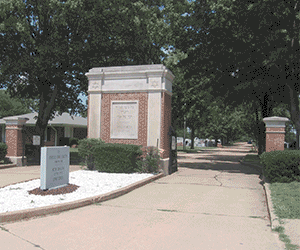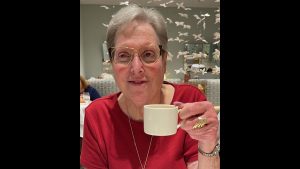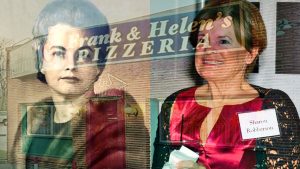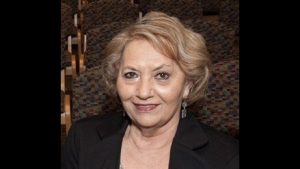Three new books by local Jewish authors
Published July 22, 2009
Three locally published books, two dealing with the Russian Jewish community of St. Louis and the third a memoir of “an Alzheimer’s sojourner” merit attention. Two books relating to local Russian Jewry are: My St. Louis, a collection of poems by Ruvim Kantrovich, and In the Late Afternoon of Life, an informal and interesting history and description of the Russian Jewish community of St. Louis by Kantrovich and Abram Yavlinsky. The third book, The Memory Lingers On: The Memoirs of an Alzheimer’s Sojourner, by Rosalyn N. Kachuck, a local author writing under the nom de plume A. Bubbe Mysseh, is a movingly written story about Anna, a woman living with Alzheimer’s, based on the author’s experiences as a nursing home volunteer.
The two books about the local Russian Jewish experience were forwarded to the St. Louis Jewish Light by Ken Weintraub, senior development officer of the Jewish Federation of St. Louis and former professional president of the Jewish Community Center. Weintraub, while at the JCC, developed a close relationship with the local Russian Jewish War Veterans of which Kantrovich and Yavlinksy are active members.
Both books are engagingly and interestingly written and form an important record of the experiences of the local Russian Jewish community. In the mid-1970s and 1980s, when visa restrictions for then Soviet Jews began to ease, a massive exodus of Jews from the Former Soviet Union began under Soviet President Mikhail S. Gorbachev. At its peak, close to one million Jews from the former Soviet Union made aliyah to Israel, including such heroes as Natan Sharanksy, who was just elected Chairman of the influential Jewish Agency for Israel. Another 250,000 Soviet Jews made their way to the United States, with several hundred settling in our own community of St. Louis.
My St. Louis, by Ruvim Kantrovich, originally written in his native Russian and translated into excellent English by his friend Avram Yavlinksy, and handsomely illustrated by Benjamin Mkrtchan, can accurately be described as a collection of love poems to St. Louis by the author/poet. In the preface, the author, an historian and former history teacher, says as much: “When I came to St. Louis, I fell in love with this city.” Previously, he had published short historical essays and other poems and stories about his experiences in his adopted city.
In The Saint Louis Waltz, Kantrovich expresses his deep affection for St. Louis as follows: “City, beautiful city, sunrise from the Arch comes again./The blue transparent sky is cut by a plane,/The summer is hot in St. Louis, my friend, you must wait for the fall./The autumn brings the charm for all our souls.”
In these few excerpted lines, Kantrovich gives expression simultaneously to his love for his new city, as well as the Russian Jewish longing for the brisk cold weather of Mother Russia. Around the Covenant/Chai Apartments, where many Russian Jews reside, one can see the smiling faces of many of them the first truly frosty day of autumn or winter, gladly taking their morning and afternoon strolls with their breath happily billowing from their mouths.
In In the Late Afternoon of Life, Kantrovich and Yavlinsky combine an excellent and rather comprehensive record of the influx of Russian Jews in St. Louis as well as descriptions of how many of the elderly among them deal with the challenges of aging in an adopted new land. We learn, for example, that “the arrival of immigrants from the USSR in St. Louis began after 1970 and by August 10, 1982 there were (a total of) 1,158 people.” Credit is given to the work of the Jewish Family and Children’s Service, the Jewish Federation of St. Louis, the Vaad Hoeir and the Epstein Hebrew Academy as well as to local synagogues and temples of all streams of Judaism in the absorption process.
Together, My St. Louis and The Late Afternoon of Life are no doubt enduring contributions to the rich and varied history of the Jewish community of St. Louis.
The Memory Lingers On details a very different kind of journey than that of the Russian Jews, although there are parallels. In her sensitively and elegantly crafted novel, Kachuck describes a journey not from one country and system of government to another very different nation and system, but from lucidity and normal memory and cognition to the ever-darkening world of Alzheimer’s disease.
Many non-fiction books that deal with Alzheimer’s tell the stiory from the point of view of the caregivers (Mom’s OK, She Just Forgets by Evelyn D. McLay and Ellen P. Young) while others are first-hand accounts (Losing My Mind by Thomas DeBaggio). In The Memory Lingers On — a novel written in the first person — protagonist Anna Metz Segal experiences what those afflicted cannot otherwise express — what has been forgotten moment to moment.
Author Kachuck notes that over five million people in America today, more than 10 percent of those over 65, have Alzheimer’s. Many of us will have to confront it. The Memory Lingers On has a huge potential audience that will benefit from a positive spin on an otherwise frightening ailment.
Indeed, Alzheimer’s and other forms of illness that result in memory loss or dementia are frightening to both the sufferer as well as the caregivers, whose own lives can erode as the minds and memories of their loved ones are erased before their eyes.
Kachuck introduces Anna Metz Segal as someone who has Alzheimer’s. “From the seashore at Coney Island, a wild excursion, told in flashbacks, recalls the drama of her life against a background of the tumultuous 20th century,” explains Kachuk in an interview. “From Anna’s point of view, the trip is a rite of passage, and not a debilitating disease. Alzheimer’s affords her an expanded portal into the experiences of life and other incarnations like a dreamer drifting in and out of restless sleep.”
Anna’s dilemma, Kachuck adds, is “that she is dying but is afraid to let go.” A series of visions of important people in Anna’s life, such as her beloved Uncle Aaron and her grandmother, who shares visions of her life in Eastern Europe and the horror of hiding during a pogrom at the age of three…becomes part of Anna’s memory, as real as if she had lived it herself.”
Kachuck’s narrative of Anna’s heroic journey evokes some of the best of the various Latin American and Italian schools of “magic realism” by such writers as Gabriel Manuel Marquez and Italo Calvino. Anna’s world is both very “here and now,” even when she is experiencing her “visions” which are both as realistic and as fantastic as the paintings of Marc Chagall.
Kachuck’s book, a 314-page paperback is published by iUniverse Inc., New York. For information on obtaining copies, at $19.95 per copy, visit www.rozzykachuck.com.













